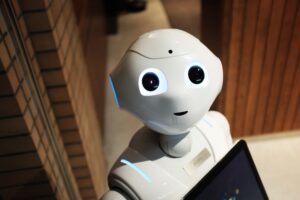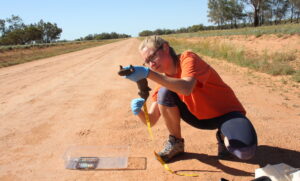Imagine someone has upended a five hundred thousand piece jigsaw puzzle on your desk. They say you have a day to solve it, you can use any resources at your disposal, and the picture you produce could save thousands of lives. How would you do it? Call an expert? Phone a friend or two to help? This is the kind of problem faced by scientists studying how diseases start in cells. For these experts, their jigsaw puzzle is made up of DNA, genes, proteins and their reactions. And they’ve phoned a friend – you.
Proteins, Problems, Puzzles
The key to understanding diseases like Alzheimer’s, Huntington’s disease, cystic fibrosis and many cancers lies in understanding how proteins fold into their shapes. Remember the ice bucket challenge that raised awareness of ALS? Scientists at Cornell University have linked protein misfolding to this neuron disease. They found that protein aggregates – clumps of proteins – form in nerve cells when misfolding occurs. If scientists understand how proteins fold and how they misfold, they can unlock the causes and cures to these diseases and more.
The idea that protein folding is crucial to cell processes has been around for a while. The process of protein folding is a colossal, complicated puzzle. It has thousands of pieces. And the order the pieces go together and the shapes they make are all important. Advances in molecular biology and computer simulation have helped scientists understand this complex process.
Proteins are the workhorses of our biology. They are the building blocks for cell walls. They speed up reactions. Proteins assist in moving other molecules around the cell. And they have many other functions. Remarkably, they even assemble themselves from amino acids, then twist into intricate patterns in a process called protein folding. It’s like watching a piece of paper make itself and then twist itself, origami style, into the shape of a swan.
Today’s computers would take 60 years to simulate a single protein folding process that takes milliseconds for a cell to do. It’s like trying to predict how people are going to react in a crowd. Even if you know how every single part is going to behave on its own, when you put them all together it becomes hugely more complex. It’s too big a problem for one computer – even a supercomputer – to solve alone.
Enter Folding@home. By using thousands of computers’ idle processing time, and giving them little tasks to do, researchers are able to take these little bits they’ve solved and stitch them together. Basically, it’s like doing a puzzle by group work.
Many hands make light work
Scientists at Stanford have taken the puzzle analogy and used it to their advantage. Rather than trying to solve the whole puzzle themselves, the Folding@home project uses a vast network of home computers to solve little parts of it for them. All of those little parts are then returned to the MIT servers and compiled into the overall simulation. Those simulations are then tested in the lab.
The results have been astounding.
The Pande Lab, which runs Folding@home, has published 129 papers with results from these simulations. The project has helped identify candidates for drug therapy to treat Alzheimer’s, Huntington’s disease, and brittle bone disease. Half of all known cancers involve some mutation in a gene called p53, and Folding@home has helped scientist understand how that mutation occurs as well as understanding viruses like influenza and HIV.
While you are sleeping, your laptop is working
The project uses a global network of computers running Folding@home software. In 2007, it set a global record for being the most power distributed computing network. And that was mainly due to PlayStation 3 consoles working in their downtime. Since then, Folding@home has now become 100 times more powerful.
Joining in is easy. You can download the Folding@home app and run it on Windows, OSX, Linux, and even Android. So the next time you wake up your laptop, you can know that it’s been busy without you. Helping look for a cure.









